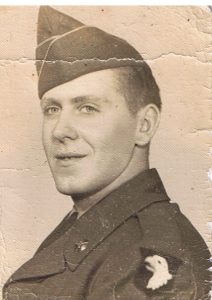Myers, Raymond Jr.
Army Private 1st class
Raymond Jr. Myers, age 21, from Michigan, Oakland county.
Service era: Korea
Date of death: Friday, October 24, 1952
Death details: In late October 1952, elements of the U.S. 32nd Infantry Regiment attacked Chinese forces on Hill 598 (often referred to as the Triangle Hill Complex) near Kumhwa, North Korea. Triangle Hill was composed of three high peaks, two of which were nicknamed “Pike’s Peak” and “Jane Russell.” If U.S. troops could push the Chinese off Triangle Hill, the  Chinese would have to fall back to the next high defensible position. The initial U.S. assault was effective; however, the Chinese quickly counterattacked, sending wave after wave of troops against the 32nd’s positions on Pike’s Peak and Jane Russell. Chinese forces eventually re-established themselves on Pike’s Peak and U.S. troops were unable to dislodge them. Corporal Raymond Myers Jr., who joined the U.S. Army from Michigan, served with G Company, 2nd Battalion, 32rd Infantry Regiment, 7th Infantry Division. He was reported missing on October 24 as his unit fought Chinese forces for control of Hill 598. He was not seen to fall in battle and he was not reported to be a prisoner of war. The area of his loss did not return to the control of U.S. forces, precluding a search for his body, and the terms of the ceasefire placed that area in the Demilitarized Zone. His remains were not identified among those later returned to U.S. custody. Today, Corporal Myers is memorialized on the Courts of the Missing at the National Memorial Cemetery of the Pacific.
Chinese would have to fall back to the next high defensible position. The initial U.S. assault was effective; however, the Chinese quickly counterattacked, sending wave after wave of troops against the 32nd’s positions on Pike’s Peak and Jane Russell. Chinese forces eventually re-established themselves on Pike’s Peak and U.S. troops were unable to dislodge them. Corporal Raymond Myers Jr., who joined the U.S. Army from Michigan, served with G Company, 2nd Battalion, 32rd Infantry Regiment, 7th Infantry Division. He was reported missing on October 24 as his unit fought Chinese forces for control of Hill 598. He was not seen to fall in battle and he was not reported to be a prisoner of war. The area of his loss did not return to the control of U.S. forces, precluding a search for his body, and the terms of the ceasefire placed that area in the Demilitarized Zone. His remains were not identified among those later returned to U.S. custody. Today, Corporal Myers is memorialized on the Courts of the Missing at the National Memorial Cemetery of the Pacific.
Source: National Archives, Defense POW/MIA Accounting Agency